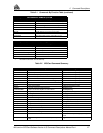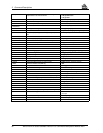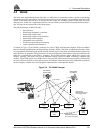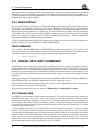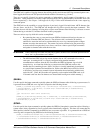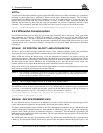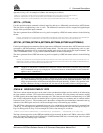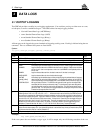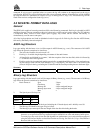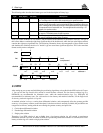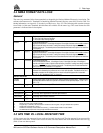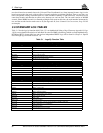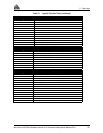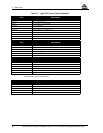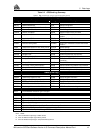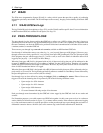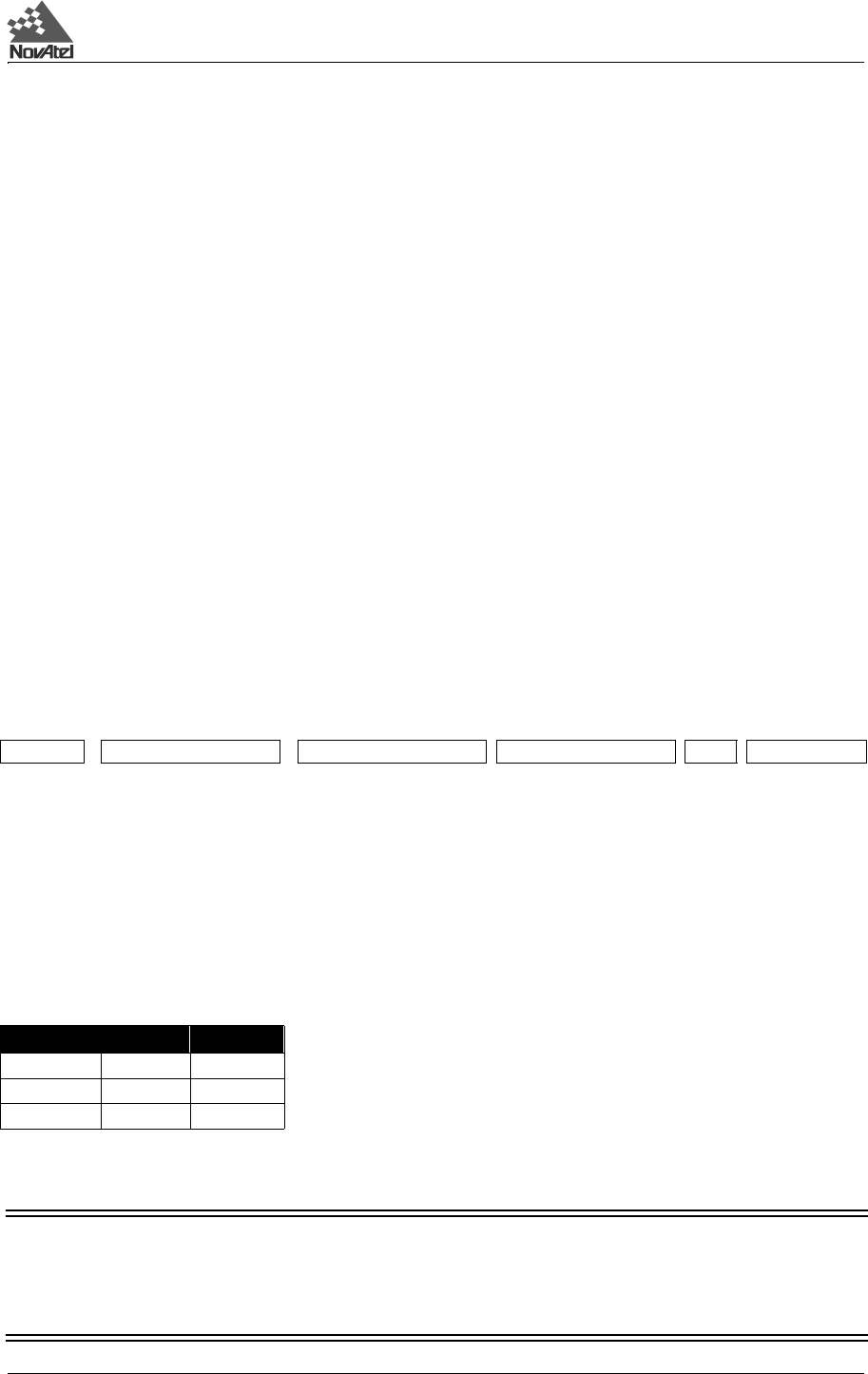
3 Data Logs
MiLLennium GPSCard Software Version 4.50 Command Descriptions Manual Rev 1 35
command. If trigger type is specified in the LOG syntax, the log will continue to be output based on the trigger
specification. Specific logs can be disabled using the
UNLOG command, whereas all enabled logs will be disabled
by using the
UNLOGALL command (see Chapter 2, Page 23 and Appendix C, Page 132). All activated logs will be
listed in the receiver configuration status log (
RCCA).
3.2 NOVATEL FORMAT DATA LOGS
General
The GPSCard is capable of executing more than 40 NovAtel format log commands. Each log is selectable in ASCII
and Binary formats. The one exception to this rule is the
RGE log, which can be logged as RGED. The “D” indicates
a compressed binary format to allow higher speed logging. Any format can be selected individually or
simultaneously over the same
COMn ports.
All of the log descriptions are listed in alphabetical order in Appendix D. Each log first lists the ASCII format,
followed by the Binary format description.
ASCII Log Structure
Log types ending with the letter A (or a) will be output in ASCII format (e.g., POSA). The structures of all ASCII
logs follow the general conventions as noted here:
1. The lead code identifier for each record is '$'.
2. Each log is of variable length depending on amount of data and formats.
3. All data fields are delimited by a comma ',' with the exception of the last data field, which is followed by
a * to indicate end of message data.
4. Each log ends with a hexadecimal number preceded by an asterisk and followed by a line termination us-
ing the carriage return and line feed characters, e.g., *xx[CR][LF]. This 8-bit value is an exclusive OR
(
XOR) of all bytes in the log, excluding the '$' identifier and the asterisk preceding the two checksum digits.
Structure:
Binary Log Structure
Log types ending with the letter B (or b) will be output in Binary format (e.g., POSB). The structures of all Binary
logs follow the general conventions as noted here:
1. Basic format of: Sync 3 bytes
Checksum 1 byte
Message ID 4 bytes unsigned integer
Message byte count 4 bytes unsigned integer
Data x
2. The Sync bytes will always be:
3. The Checksum is an
XOR of all the bytes (including the 12 header bytes) and is initially set to 00.
4. The Message ID identifies the type of log to follow.
5. The Message byte count equals the total length of the data block including the header.
NOTE: Maximum flexibility for logging data is provided to the user by these logs. The user is cautioned,
however, to recognize that each log requested requires additional
CPU time and memory buffer space.
Too many logs may result in lost data and degraded
CPU performance. CPU overload can be monitored
using the idle-time and buffer overload bits from the
RCSA/B log. See Table D-5, Page 196 (GPSCard
Receiver Self-test Status Codes).
$xxxx, data field..., data field..., data field... *xx [CR][LF]
Byte Hex Decimal
First AA 170
Second 44 68
Third 11 17



